31.10.20
Fino & Festive Kilchomans, Brilliant Ballantine, Beautiful Benriachs, Joyous Johnnie Walker and More
Hello!
An abundance of material again this time and where to start what to include?
Well, as I tasted the Benriachs some time ago and I didn‘t want them lost amongst other things, let‘s start there. We have four new expressions, two at 10 years old (Original and Smoky) and two at 12 (Original and Smoky). Rachel Barrie has been working her magic again here. I tasted the two 10s together and then the two 12s. I haven‘t had time to taste a second time to compare the two Original and then the two Smoky.
The Original 10 (which still has a smoky hint) is from three cask types – bourbon, sherry and virgin oak while The Smoky 10 is from bourbon and toasted virgin oak as well as Jamaican rum casks. The Original 12 has been matured in sherry, bourbon and port casks while its Smoky 12 sister has quietly rested in bourbon and sherry wood as well as marsala wine casks. Each style has absorbed the flavourful goodness of the cask types used. Original 10 for me had fruit, vanilla custard with baked apple and sultana sponge plus even a little mint on the nose. Creamy and with a tiny touch of sulphur. With water, some ginger notes emerge. Those transfer to the palate with more vanilla, dried fruits and spiciness. The 12 does have port wine notes on the nose as well as being spicy with honeyed plums and dried vine fruit and floral aromas too. A bit of Turkish delight alongside the vanilla and some almonds. Figs emerge from the glass also. The spiced fruits and honey are in the flavour along with a little peppery note and wood sweetness (cigar box) and a tiny hint of cask char. Another long finish.
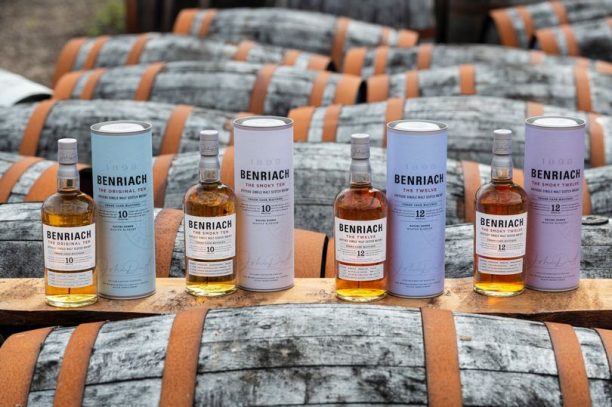
Moving on to the smoky ones, The 10 is smoky but softly so on the nose; cough sweets and woolly socks; a salty note too, despite not being on the coast (it’s about 9 miles away), as well as barley sugar and malty sweetness. The smoky and peaty notes are enhanced by the addition of water – much more medicinal plus some lightly smoked bacon and oak char; also creamier and waxier now. Smoky and peaty on the palate; some astringency; richly toasted barley and oak stave char. It is long, smoky and dry but with a lingering malt sweetness. In the smoky versions I also got more out of the 12 than the 10. The smoke and creamy Benriach vanilla custard notes are there again. It‘s an intriguing nose with distinct soft candy aromas, barley sugar/candyfloss. With water, it becomes more medicinal/ antiseptic at first with more richly toasted barley. Sweet fruit notes return with golden or maple syrup and spices – ginger, mace and some savoury saffron. It gets fruitier the longer it sits in the glass and the empty glass reeks of baked fruits – lovely. A richly smoky yet balanced palate with plenty of malted barley and some slightly burnt toast. Another long finish with smoke and toastiness, bitter coffee grounds, liquorice and burnt caramel.
I like peated Benriachs and would happily drink either of these but do tend to prefer their less smoky versions. It‘s just how they suit my palate. Looking back at the extended notes in my book, it‘s noticeable that I‘ve detected more in the 12s than the 10s but did enjoy them all. This will surely have something to do with those extra two years but also the choice of casks for maturation and what they added to and extracted from the spirit. This makes a cracking basis to their core range and all are worth trying though I have a little preference for The Original 12. Your own preference may well be different.
Before more tasting, let‘s look at an important new book about the Johnnie Walker brand, its people, its development and owning companies – ‘‘A Long Stride – The Story of the World‘s No.1 Sotch Whisky“ by Dr. Nicholas Morgan, Diageo‘s head of Whisky Outreach – to celebrate 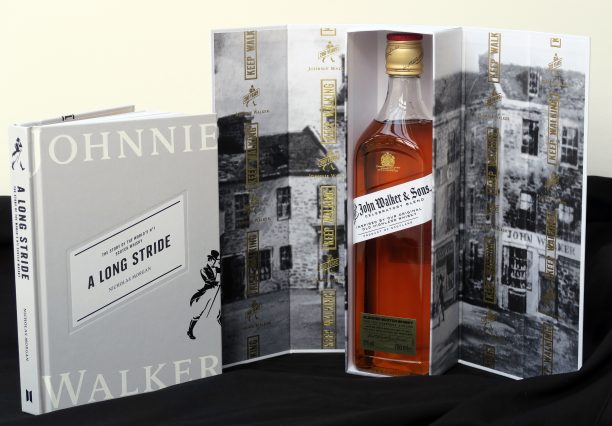 200 Years of Johnnie Walker. I‘d asked to acquire an advance copy for review but also as a birthday present to self. A couple of weeks later a signed copy with this handsome bottle of an anniversary blend arrived!
200 Years of Johnnie Walker. I‘d asked to acquire an advance copy for review but also as a birthday present to self. A couple of weeks later a signed copy with this handsome bottle of an anniversary blend arrived!
The book starts back in the 19th century with the opening of John Walker‘s shop in Kilmarnock, Ayrshire in the south of Scotland and brings us up to the present day by way of the resulting family firm then subsequent larger corporate entities; the founder‘s charity and philanthropy; care for the workers and for the quality of their blends; their initial dislike of advertising then their embracing of and innovation in same; their highs and lows as a brand set alongside events in the whisky industry and the wider world. I like history anyway but this is a fascinating account for any whisky or history fan, whether you‘re one of those or both. My description doesn‘t really do it justice so do buy a copy. ‘‘A Long Stride“ is published by Canongate of Edinburgh and costs only £16.99 / US$25. An excellent idea for yourself or as a gift. One to cosy up with on a weekend with a dram of the good stuff. Available from good bookshops online and in person – please support them. Or via Amazon if you really must.
Some might dismiss such a book as PR puff, being written by someone from within Diageo, which owns the JW brand. Well, they‘d be daft to do so. It‘s a very thoroughly researched and detailed work with much to inform – and amuse – the reader. Dr. Nick was originally a historian by profession and taught at Glasgow University before joining Diageo, moving into the marketing team and on to his current role. He‘s a globally known and respected whisky person inside and outside the Diageo fold. I thought I‘d remembered his academic specialism was social history but he reminded me his PhD was ‘‘in seventeenth century religious history (the Society of Friends) – but I sort of morphed to nineteenth and twentieth century social/business/urban history when I went to teach in the Scottish History Department at the University of Glasgow“. I was only partly right then!
I assumed the book was intended to be published in this, the 200th anniversary of Johnnie Walker, if perhaps delayed a little by the covid crisis and wondered how long it had taken from idea to completion as well as what the high points and frustrations were. I‘d also wondered, when reading it, if Dr. Morgan had enjoyed returning to write a lengthier work, more like an academic project. The response to my questions was:
‘‘The intention was that the book would always be published in the Johnnie Walker anniversary year (assuming I met the publisher’s deadlines). I suppose I’ve been working on the book for a little over three years, researching in libraries and archives in London, Edinburgh, Glasgow, Kilmarnock, Ayr – even Brighton. And of course taking advantage of the considerable on-line resources that are now available to researchers.
suppose I’ve been working on the book for a little over three years, researching in libraries and archives in London, Edinburgh, Glasgow, Kilmarnock, Ayr – even Brighton. And of course taking advantage of the considerable on-line resources that are now available to researchers.
Lockdown meant no distractions from completing the manuscript and going through the editing process. It’s always so easy to think that you just need to pop into the British Library to check a couple of things, which means of course a day’s writing lost. So none of that was a good thing. On the negative side we did suffer a bit from not being able to use some of the images we wanted to put into the book as not all the relevant repositories were open.
To be honest I was quite nervous about the writing part of the project (to be honest the research is easy, if a bit relentless) having not written anything as lengthy for many years. So there was a bit of prevarication at the beginning (isn’t there always?), a few false starts, and then an episode of real writer’s block – that was unlocked for me by a couple of friends who gave me some very good but sound and simple advice. The next day I think I wrote about 3,000 words and after that it was hard to stop. I did over deliver on our agreed word count with Canongate, so the book is rather bigger than was originally intended (and the paper just slightly lighter in weight). But having said that at the moment I’m going through a phase of regret about all the good stuff I had to leave out for want of space.
Probably the most enjoyable part of the writing was when it came to trying to bring some of the characters in the story to life, which I hope I did quite well. I was lucky to have such remarkable people to write about, and to be honest I could have just written a book about Alexander Walker I loved him so much.‘‘
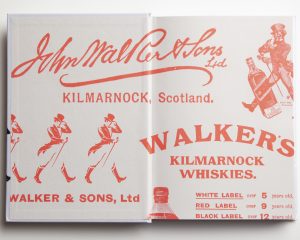 Well he certainly did bring them to life and the resulting book is a very pleasurable read. Not just saying that because it was given to me – I wouldn’t be doing my job right if so. The first Alexander Walker is a fascinating character. I‘d be delighted to see a follow-up book about him and some of his descendants, if the information is there.
Well he certainly did bring them to life and the resulting book is a very pleasurable read. Not just saying that because it was given to me – I wouldn’t be doing my job right if so. The first Alexander Walker is a fascinating character. I‘d be delighted to see a follow-up book about him and some of his descendants, if the information is there.
The book amused on a number of counts. One was Victorian whisky blenders imbuing their whiskies with qualities we‘d never get away with now. Another was how whisky was much drunk, with soda, by fashionable ladies at the start of the 20th century – so how did we get to the silly notion that whisky is a man‘s drink, later on? I think my favourite part is when consumers are told by early blenders that blends are better than malts (which were maybe, early on, quite robust beverages) and the malt distillers and farmers fought with the grain whisky producers and blenders as ‘‘adulterers“ of malt whisky. We seem to have that dispute amongst consumers rather than producers these days but these things seem to come round in circles!
On that note, I come to a recently launched blend from Chivas (apologies to Johnnie Walker!) in the form of Ballantine‘s 7 Bourbon Finish, the 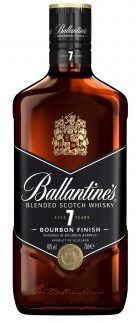 creation of my former colleague, Sandy Hyslop and his blending team in response to a request from their marketing colleagues for something that sits between Ballantine‘s Finest and 12 Year Old and that is still accessible and affordable. I don‘t often get sent blends to write about so it‘s a joy to be able to do so here. And what a blend this is! Honestly, I could happily just inhale this, never mind taste it. I must thank Sandy and another former colleague, Ken Lindsay, Global Brand Ambassador and Cristina Munoz of the Comms team, for their help in getting this to me.
creation of my former colleague, Sandy Hyslop and his blending team in response to a request from their marketing colleagues for something that sits between Ballantine‘s Finest and 12 Year Old and that is still accessible and affordable. I don‘t often get sent blends to write about so it‘s a joy to be able to do so here. And what a blend this is! Honestly, I could happily just inhale this, never mind taste it. I must thank Sandy and another former colleague, Ken Lindsay, Global Brand Ambassador and Cristina Munoz of the Comms team, for their help in getting this to me.
Sandy says that many different variations were tried but that the 7 years old really was the sweet spot. Purely a coincidence that George Ballantine sold his whisky at seven years old back in the 19th century. It‘s not the same whiskies as for Finest at a different age. It‘s a different recipe. They wanted more of the US oak flavour e.g. Glenburgie works well with bourbon wood so they upped that in this blend, though some of the whiskies used are bourbon matured from the start anyway. First fill bourbon was used for the finishing period. The house style vanilla/toffee/honey notes were also required. Balance, sweetness and smoothness were other pre–requisites. Achieved! My notes:
Appearance: Rich gold, dried apricot hue – almost orange.
Nose: Soft and rounded, some youthful notes at first plus a slight zesty, citrus aroma – lemon and orange sponge; oak; dab of soft vanilla and icing sugar; toffee apple and baked honey. With water, sugary notes more to fore then floral and citrus; golden syrup; more sweet oak and vanilla wiggles back in. All finely interwoven. Left to sit, more toffee and caramel notes develop alongside the baked fruit. Delightful nose.
Palate: Nice, medium mouth weight and slightly coating; good texture; soft and well-integrated. Some astringency plus cereal and wood sweetness; definite vanilla and some almond notes. Baked apples with spices and honey.
Finish: Medium – long finish with sweet and dry notes; malted barley.
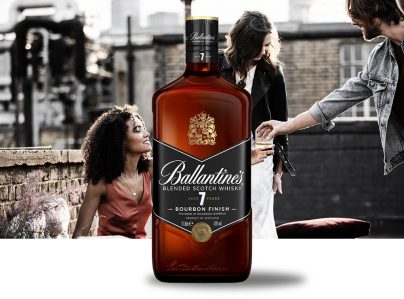 I wondered how long the blend had been finished in the bourbon casks but Sandy said that wasn‘t a criterion. Rather, it was to be judged on flavour and was sampled every 8 weeks till the team judged it to be exactly right. This expression will be on sale in a number of markets including France and Poland (the two largest Ballantine‘s markets) as well as Russia, Brazil and Chile, Germany, certain eastern and northern European markets, plus India and Japan. It‘s not going to the US for now while the company takes time to establish Finest rather more. This market and maturation info came out of an online tasting a week or so ago during which it was good to ‘‘meet“ Hannah Ingram, Brand Manager and Anna Filipiak, Brand Ambassador (Poland), two young women who look like great assets to the Ballantine‘s brand. I was told the recommended serve for Ballantine‘s 7 Bourbon Finish is in an Old Fashioned and – whaddaya know?– Old Fashioned Week is a thing happening first week of November, according to another brand posting I received recently. Who on earth came up with that? I tried Ken Lindsay‘s recipe for an Old Fashioned as my birthday dinner aperitif this week and followed his instruction to use orange bitters, not ordinary ones. Here we go – Ballantine‘s 7 Old Fashioned:
I wondered how long the blend had been finished in the bourbon casks but Sandy said that wasn‘t a criterion. Rather, it was to be judged on flavour and was sampled every 8 weeks till the team judged it to be exactly right. This expression will be on sale in a number of markets including France and Poland (the two largest Ballantine‘s markets) as well as Russia, Brazil and Chile, Germany, certain eastern and northern European markets, plus India and Japan. It‘s not going to the US for now while the company takes time to establish Finest rather more. This market and maturation info came out of an online tasting a week or so ago during which it was good to ‘‘meet“ Hannah Ingram, Brand Manager and Anna Filipiak, Brand Ambassador (Poland), two young women who look like great assets to the Ballantine‘s brand. I was told the recommended serve for Ballantine‘s 7 Bourbon Finish is in an Old Fashioned and – whaddaya know?– Old Fashioned Week is a thing happening first week of November, according to another brand posting I received recently. Who on earth came up with that? I tried Ken Lindsay‘s recipe for an Old Fashioned as my birthday dinner aperitif this week and followed his instruction to use orange bitters, not ordinary ones. Here we go – Ballantine‘s 7 Old Fashioned:
Use a whisky tumbler or rocks glass
Muddle 1 – 2 sugar cubes with 4 dashes of orange bitters
Add 5cl (50ml) of Ballantine‘s 7 Bourbon Barrel, ice cubes (not too small) and stir well till all the sugar is dissolved.
Squeeze a slice of orange zest over the glass and drop it in. Stir again and add more ice if required.
Superb!
My last tasting this time covers two new expressions from Kilchoman – their Fino Sherry Matured (46% vol) and the Machir Bay Cask 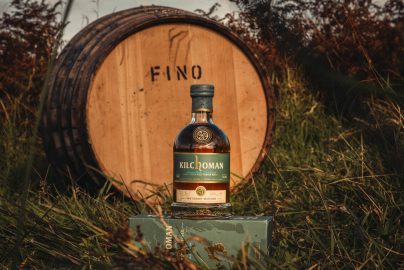 Strength Festive Edition (58.6% vol). Kilchoman is one which took a little while to get into its flavour stride for me, at least, but I‘ve enjoyed more of their output in the last few years. These two are not to be compared in the sense of whether one is better than the other. As you might expect, the Fino Sherry Matured was the lighter of the two expressions but still has a pleasant, oily texture. Both have quite medicinal noses but this one had a little sulphur but also a hint of fruit and plenty of cereal sweetness on the nose. An odour of fresh sea air. With water, some savoury spices – and a waft of wine gums. On the palate, definitely more savoury and herbal rather than sweet with plenty of
Strength Festive Edition (58.6% vol). Kilchoman is one which took a little while to get into its flavour stride for me, at least, but I‘ve enjoyed more of their output in the last few years. These two are not to be compared in the sense of whether one is better than the other. As you might expect, the Fino Sherry Matured was the lighter of the two expressions but still has a pleasant, oily texture. Both have quite medicinal noses but this one had a little sulphur but also a hint of fruit and plenty of cereal sweetness on the nose. An odour of fresh sea air. With water, some savoury spices – and a waft of wine gums. On the palate, definitely more savoury and herbal rather than sweet with plenty of 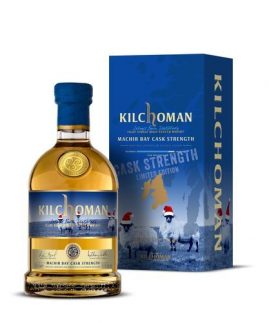 smoke and fire embers; some salt and roasted barley. The Machir Bay (loving the sheep in Santa hats!)has plenty of sweet cereal aromas, creamy and smoky but not overpoweringly so. A bit like smoked ham and smoke develops as it sits in the glass. Creamy oak notes with some vanilla ice cream and barley sugar also on the nose. On the palate, it‘s much more medicinal than the nose would have you believe. More throat-catching embers and cask char. Some salted crisps/nuts and rich barley notes. Both are long, smoky, mouth-drying and medicinal finishes with toasty barley but the Machir Bay had more salt for me – in this session – but both are whiskies I intend to revisit for my own enjoyment in future weeks.
smoke and fire embers; some salt and roasted barley. The Machir Bay (loving the sheep in Santa hats!)has plenty of sweet cereal aromas, creamy and smoky but not overpoweringly so. A bit like smoked ham and smoke develops as it sits in the glass. Creamy oak notes with some vanilla ice cream and barley sugar also on the nose. On the palate, it‘s much more medicinal than the nose would have you believe. More throat-catching embers and cask char. Some salted crisps/nuts and rich barley notes. Both are long, smoky, mouth-drying and medicinal finishes with toasty barley but the Machir Bay had more salt for me – in this session – but both are whiskies I intend to revisit for my own enjoyment in future weeks.
I reported last time on the Wolfcraig distillery to be set up by a group of long-serving industry execs. Even better news is that they‘re being joined by Master Blender, Richard Paterson, who will oversee the blending work. Now that is a coup and we can expect some exciting output from this venture. This follows recent news that Richard is reducing his duties at Whyte & Mackay where he‘s now concentrating only on The Dalmore from where he‘s created great expressions over the years. I‘ve been lucky enough to sample a number of them.
Many other bits of news have arrived in the last two weeks including a release on the new Rosebank 30 Year Old and the reopening of Glenkinchie Distillery visitor centre in an enhanced form.
In the case of Rosebank (Lowland single malt), the owners have announced the first in a series of annual, limited edition, releases – a 30 Year 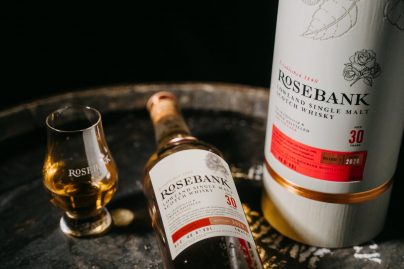 Old 1990 vintage (the original distillery closed in 1993), bottled un-chillfiltered and at 48.6% ABV. They are also giving a select number of customers the chance to “bank” a future expression of the rare liquid.
Old 1990 vintage (the original distillery closed in 1993), bottled un-chillfiltered and at 48.6% ABV. They are also giving a select number of customers the chance to “bank” a future expression of the rare liquid.
These 4,350 limited-edition bottles are ‘‘Release One“, a nod to this new chapter in Rosebank’s legacy. Bottles are priced at £1,600 and available directly from Rosebank’s website. Not for my piggy bank, I‘m afraid. Each year will see a new limited-edition release, “laddering up”, as their info puts it, to the first new Rosebank spirit under the ownership of Ian Macleod Distillers.
We‘re also told, ‘‘Rosebank is also giving its fans and connoisseurs the chance to get more than just a bottle of the rare whisky. The first 200 people to scan the QR code on the neck collar of their Release One bottle will be given the opportunity to enjoy a dram of Release Two at their nearest high-end, luxury bar or whisky retailer in 2021 as well as the chance to receive an early link to purchase Release Two before the general release. (A list of participating outlets for these customers to choose from will be sent to them in early 2021.)“ Not for the ordinary consumer, then but we will look forward to the eventual release of the whisky Ian Macleod Distillers releases when they deem it ready.
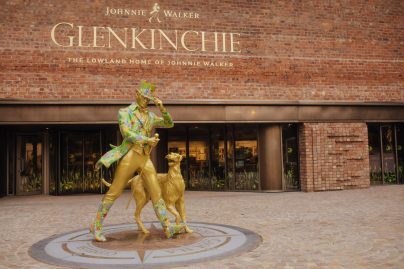 The Glenkinchie news is the opening of a unique new multi-million pound visitor attraction for the distillery and garden. Glenkinchie is near Edinburgh. It‘s reopened to the public again this week as part of a multi-million investment in several of its premises by owner, Diageo and features a number of new tour formats. It will also now be the Lowland home of Johnnie Walker, ‘‘the first of four corner distilleries around Scotland that will form an incredible network of visitor experiences linked to the world’s number one Scotch whisky…“ The Four Corners Glenkinchie 16 Year Old is the first release from the ‘Four Corners of Scotland Collection’ which marks the refurbishment of the brand homes of Glenkinchie, Cardhu, Caol Ila, and Clynelish all of which represent the ‘four corners of Scotland’ and the regional variations of Lowland (Glenkinchie), Speyside (Cardhu), Islay (Caol Ila) and Highland (Clynelish) crucial to the Johnnie Walker blends”. The landscaped garden is ‘‘ carefully curated to reflect the stunning local rural environment – and an extraordinary immersive guest experience in the distillery’s traditional Victorian red brick warehouses.“ When I can get a look at it, I‘ll write more. It‘s a long time since I visited this one and this is an excellent reason to go back.
The Glenkinchie news is the opening of a unique new multi-million pound visitor attraction for the distillery and garden. Glenkinchie is near Edinburgh. It‘s reopened to the public again this week as part of a multi-million investment in several of its premises by owner, Diageo and features a number of new tour formats. It will also now be the Lowland home of Johnnie Walker, ‘‘the first of four corner distilleries around Scotland that will form an incredible network of visitor experiences linked to the world’s number one Scotch whisky…“ The Four Corners Glenkinchie 16 Year Old is the first release from the ‘Four Corners of Scotland Collection’ which marks the refurbishment of the brand homes of Glenkinchie, Cardhu, Caol Ila, and Clynelish all of which represent the ‘four corners of Scotland’ and the regional variations of Lowland (Glenkinchie), Speyside (Cardhu), Islay (Caol Ila) and Highland (Clynelish) crucial to the Johnnie Walker blends”. The landscaped garden is ‘‘ carefully curated to reflect the stunning local rural environment – and an extraordinary immersive guest experience in the distillery’s traditional Victorian red brick warehouses.“ When I can get a look at it, I‘ll write more. It‘s a long time since I visited this one and this is an excellent reason to go back.
 Till mid-November , happy dramming and do send in comments if you‘ve tasted any of these whiskies yourself. I‘d like to know your views.
Till mid-November , happy dramming and do send in comments if you‘ve tasted any of these whiskies yourself. I‘d like to know your views.
Slainte mhath,
Caroline
Comments